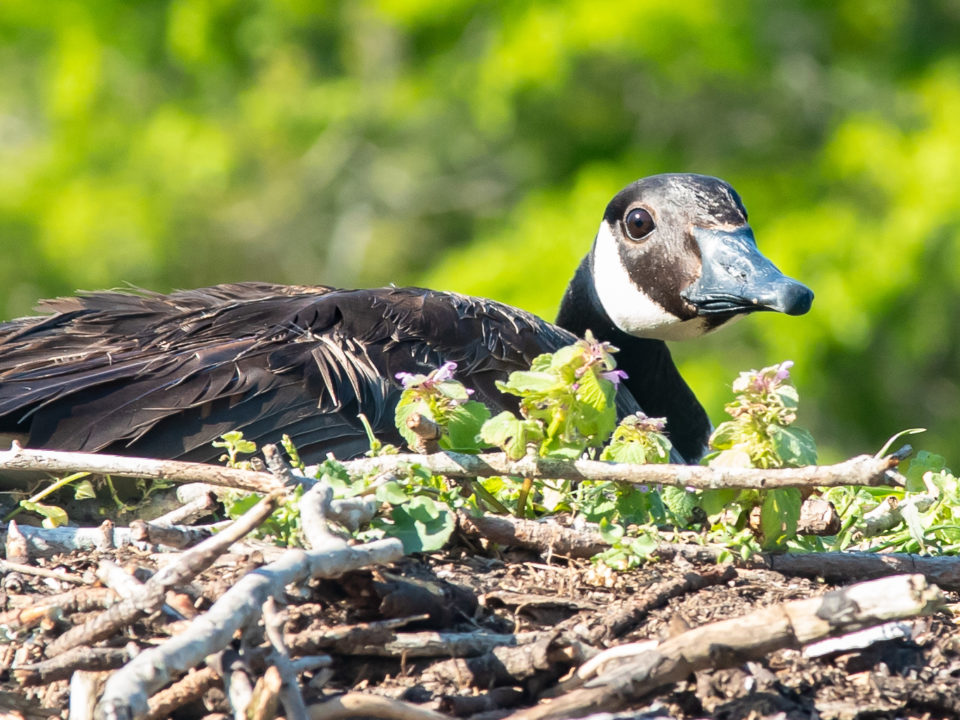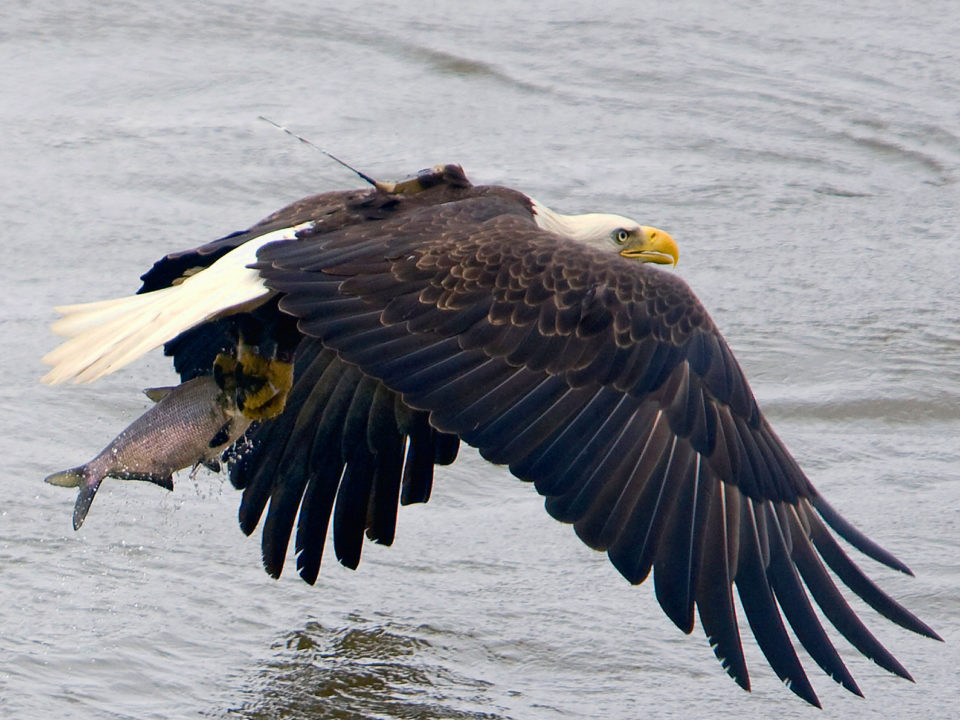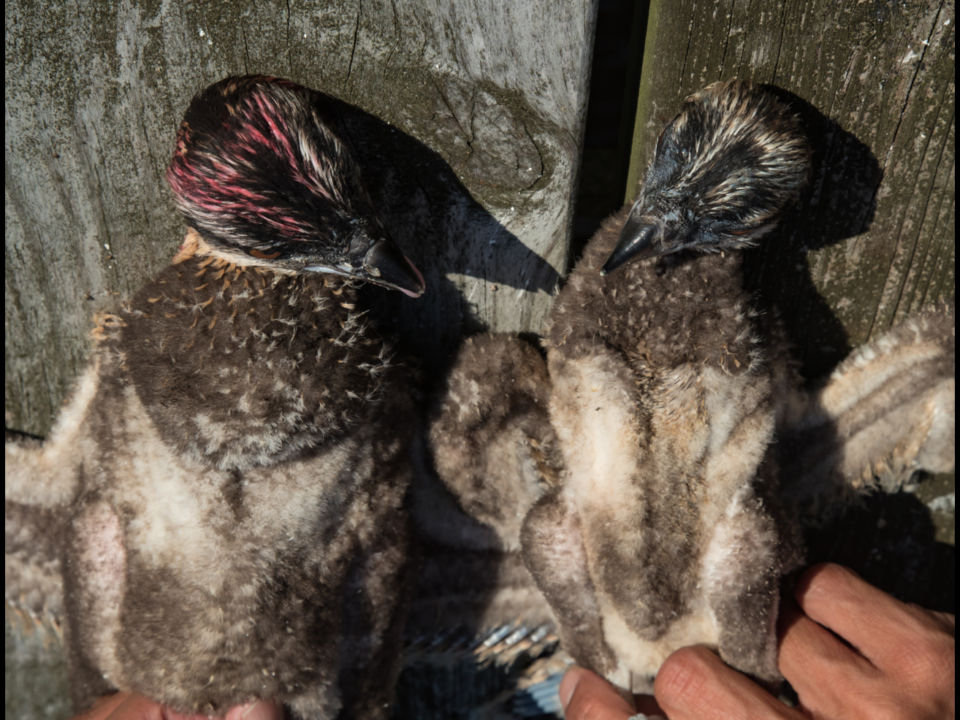Mulberry sparrows decline
Camellia Remains at Nanney’s Creek June 14
June 14, 2014Camellia Visits North Carolina – Back in VA 6/17
June 18, 2014
The population of coastal plain swamp sparrows (Melospiza georgiana nigrescens) breeding within Mulberry Point along the Rappahannock River in Virginia has experienced a dramatic decline over the past ten years. A survey conducted by the Center for Conservation Biology on June 7th detected only 5 singing males, in stark contrast to an identical survey conducted in 2005 that resulted in the detection of 41 singing males. Discovery of the site in 2005 extended the known breeding range 90 kilometers to the south.
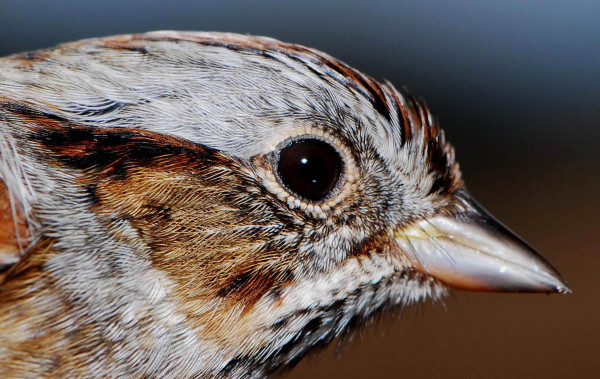
Swamp sparrow. Photo by Bryan Watts.
The coastal plain swamp sparrow is restricted to the mid-Atlantic coast. The form is distinctive in having a larger bill, grayer plumage, and more black in the crown and nape compared to other swamp sparrows. A recent assessment of the population within Maryland, Delaware, and New Jersey resulted in a conservative estimate of 28,000 pairs and established a center of abundance around Delaware Bay and the Tuckahoe and Mullica rivers in coastal New Jersey. The survey also suggested a decline in both abundance and distribution along the western shore and lower eastern shore of the Chesapeake Bay.
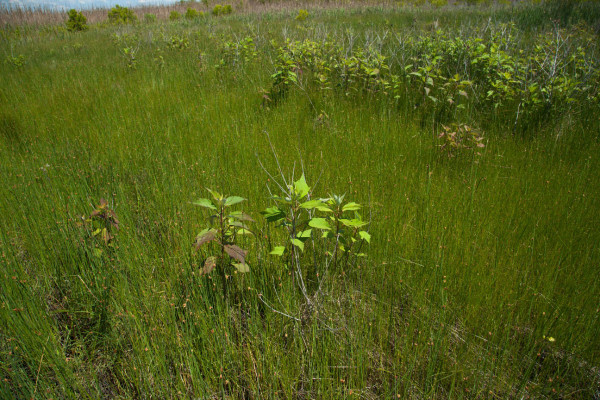
Characteristic breeding habitat for the Coastal Plain Swamp Sparrow within Mulberry Point in Virginia. Photo by Bryan Watts.
Within the Coastal Plain, swamp sparrows occur in marshes within a fairly narrow salinity band from tidal fresh to approximately one part per thousand. Pairs utilize habitats with a mix of marsh vegetation and shrubs that typically form along the marsh-upland interface. Within the Mulberry Point site, habitat components include olney threesquare (Scirpus olneyi), salt meadow hay (Spartina patens), marsh hibiscus (Hibiscus moscheutos), and cattail (Typha augustifolia).
The cause of the population decline is unclear. The preferred ecotone habitat has been visibly reduced over the decade with invasive common reed (Phragmites australis) occupying more of the adjacent uplands and the wetter portions of the marsh containing pickerelweed (Pontederia cordata) expanding. These two patterns have effectively squeezed the preferred breeding habitat within the site. It is also well known that occupation of sites by the form may be episodic. Populations seem to come and go over relatively short periods of time.
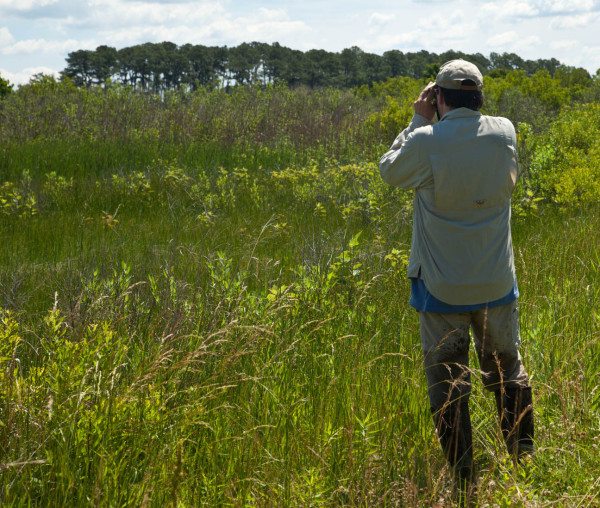
Bryan Watts surveys for Coastal Plain Swamp Sparrows along the Rappahannock River in Virginia. Photo by Marian Watts.
The Coastal Plain Swamp Sparrow is morphologically distinct, geographically isolated, and specialized in a narrowly-defined habitat type. All of these characteristics are common to other sparrow forms that were extirpated or have been of high conservation concern in recent decades, such as the Dusky Seaside-sparrow (Ammodramus nigrescens), Cape Sable Seaside-sparrow (A. mirabilis), and Ipswich Sparrow (Passerculus sandwichensis princeps). Given the uncertain status of this form in the southern portion of its range, a broad investigation of occurrence within appropriate habitat seems warranted.
Written by Bryan Watts | bdwatt@wm.edu | (757) 221-2247
June 17, 2014
Related posts
A brood of osprey in Mobjack Bay showing a well-fed chick (left) and an emaciated chick (right). The chick on the right would die the following week due to starvation. Work in Mobjack Bay over a 40+ year period has shown that both reproductive rates and food delivery rates have declined dramatically. The decline in provisioning has led to an increase in brood reduction or chick loss due to starvation. Photo by Bryan Watts.

